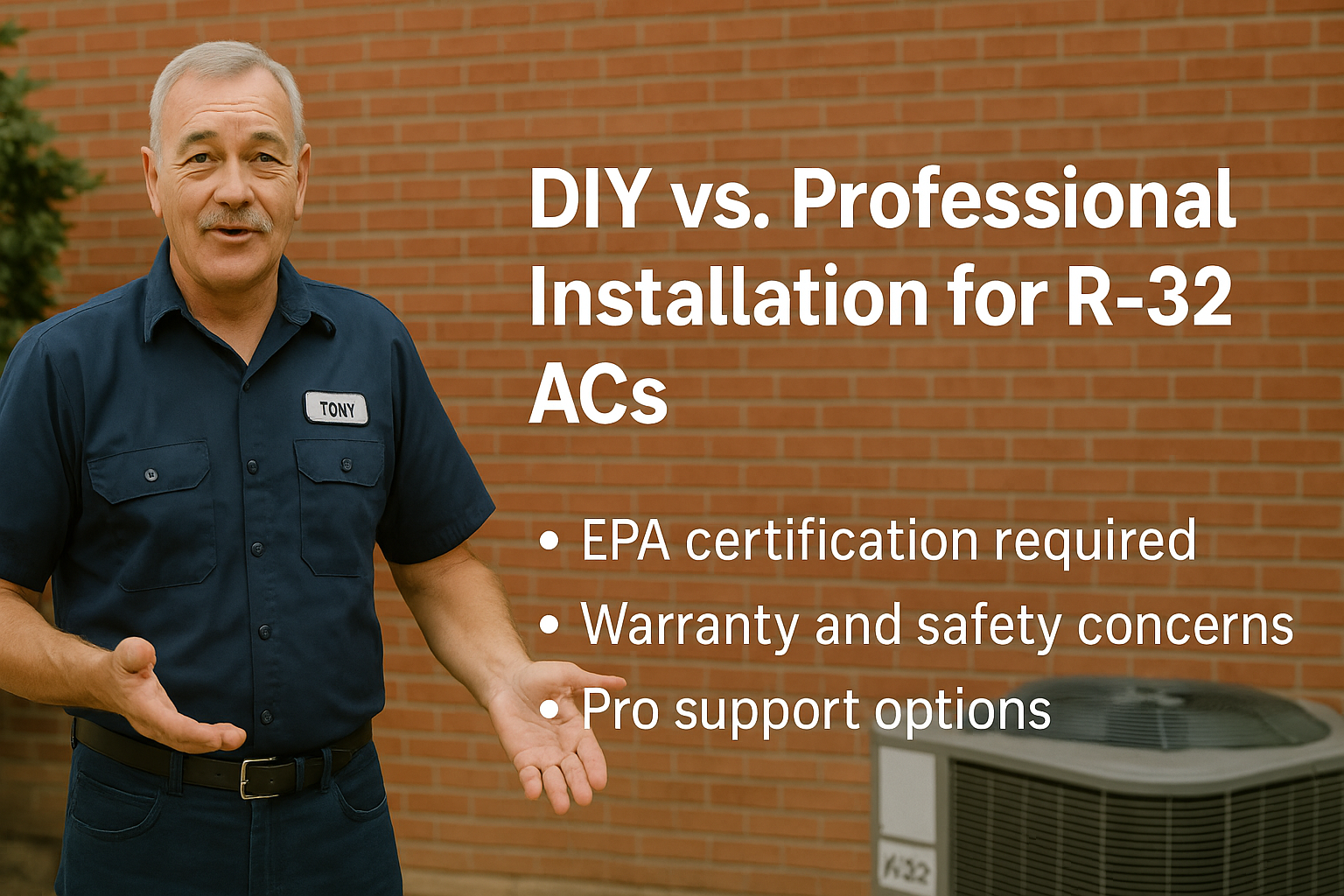Hey folks—Tony here. I know some of you are pretty handy. You’ve installed ceiling fans, swapped out water heaters, maybe even tackled some ductwork. So naturally, when it comes to a new 3-ton R-32 air conditioner, you might be wondering:
“Can I install it myself?”
Technically? Yes. But here’s the truth: just because you can, doesn’t mean you should. Let’s look at the facts so you can make the right call for your home, budget, and safety.
👷♂️ 1. EPA Certification Is Legally Required for Handling Refrigerants
R-32 is classified as an A2L refrigerant—low flammability, low toxicity—but it's still regulated. Under Section 608 of the Clean Air Act, you must be EPA-certified to handle, charge, or dispose of refrigerants in HVAC systems.
Without this cert, not only could you damage the unit, but you could be fined for improper handling or venting.
🔗 Source – EPA Section 608 Technician Certification
🛠️ 2. DIY May Void Your Manufacturer Warranty
Most major brands (Goodman, Carrier, Daikin, etc.) require installation by a licensed HVAC contractor for the factory warranty to remain valid.
If you install it yourself, even perfectly, and a compressor fails in year two? You’re paying full price for the replacement.
🔗 Source – Goodman Warranty Coverage Terms
💡 3. Mistakes Can Be Costly—Even Dangerous
Installing an R-32 system requires:
-
Proper vacuum pump and micron-level evacuation
-
Correct refrigerant charge by weight and superheat/subcooling
-
Electrical hookup with breaker sizing and disconnect box
-
Pressure testing, brazing, and nitrogen purging
-
Knowledge of A2L ventilation and sensor requirements
A small mistake in refrigerant charge or wiring can lead to reduced efficiency, early failure, or even fire hazards.
🔗 Source – R-32 Systems Safely
📦 4. Some Retailers Offer Pro Support or Hybrid Options
Some online retailers (like us at The Furnace Outlet) offer packages where you purchase the system, then schedule a vetted pro to install it. This gives you better pricing without sacrificing the warranty or safety.
We also provide guidance for permitted self-installs in rural or off-grid setups, with the right disclaimers and resources.
🔗 Source – HomeAdvisor: Cost to Install Central AC (Pro vs DIY)
✅ Tony’s Takeaway
Here’s the deal: If you’re EPA-certified, know what you're doing, and live in a place that allows owner installs, DIY can save a few bucks.
But if you want peace of mind, warranty protection, and optimal performance from your new R-32 system? Call in a pro. We work with licensed installers nationwide and can bundle the whole thing—unit + install + warranty—at a great value.
Need help finding an installer or verifying if you qualify to DIY? Talk to me directly—I’ll steer you right.
In the next topic you will know about: Sizing Your 3-Ton AC: Is It Right for Your Home?







